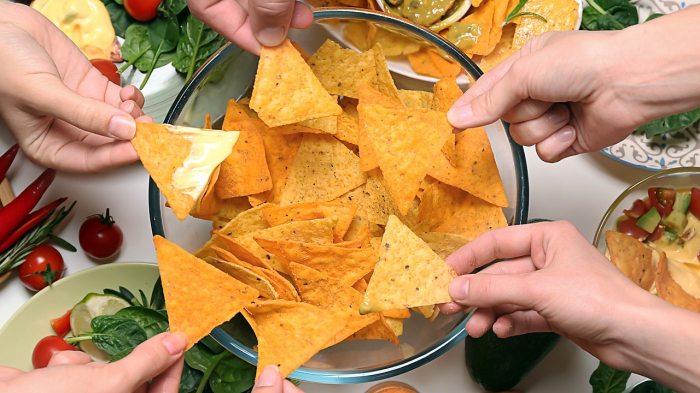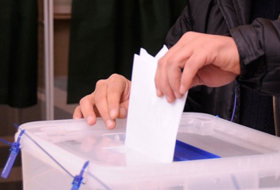Do you double-dip or popcorn dive, share an ice-cream or tuck into a birthday cake after someone's blown out its candles? We ask the experts whether five common, but some say 'filthy', food habits are safe.
Double-dipping crisps

A 1993 episode of American sitcom Seinfeld highlighted the potential hazard of double-dipping when George was given a lesson by Timmy on the social etiquette of eating crisps with dip.
“You took a bite… and you dipped again! That’s like putting your whole mouth right in the dip".
Is Timmy right? Professor Paul Dawson, a food scientist at Clemson University, South Carolina, measured the transfer of bacteria from a bitten crisp to various dips. He gave nine volunteers a cracker each and asked them to bite into it before dipping it into a tablespoon of dip for three seconds. They repeated the process with new crackers, and after three to six double-dips the average number of bacteria transferred was 10,000. Imagine how many bacteria would be transferred if lots of people were double-dipping!
What about the dip-and-flip method, when you dip the side of the crisp you've not bitten? Professor Dawson told us "It is probably as objectionable to touch a chip with your hands and fingers before sticking it back into a dip. This would depend on the hygiene of the person touching the food, which varies from person to person.”
Double-dipping can also be an allergy risk, as someone might eat from a dip that has been contaminated with another sauce containing an allergen.
Conclusion: spare yourself and others from the potential perils of double-dipping and put sauces and dips on your plate before you scoop them up.
Licking the same ice cream

It wouldn’t be a holiday (rainy or not) without ice cream. However, sharing ice cream has a long, yet tragic, history.
Less than 150 years ago, UK vendors sold ice cream in a tiny glass called a ‘penny lick’, which customers would lick clean and return to the vendor. It was then refilled and served to the next customer. This is believed to have contributed to the spread of tuberculosis and cholera. Penny licks were outlawed in 1898 and paved the way for edible ice-cream cones.
Is sharing your ice cream just as dangerous? Sharing a tub of ice cream, even with two spoons, is essentially another form of double-dipping, as is licking the same ice cream from a cone.
And please don’t share ice creams with your dog. It’s gross.
Conclusion : don’t lick the same food as other people or animals.
Popcorn diving

Sharing a bowl of popcorn at the cinema is common practice, but is it dirty?
A study from Clemson University found that relatively small amounts of bacteria are transferred to popcorn when it is handled. However, it varies considerably from person to person and more bacteria might be transferred in a public place than in a private home.
Conclusion: if you're the cautious type, refuse to share your popcorn. Most healthy adults should have an immune system that can tolerate the amount of bacteria likely to be shared in this way. However, people with a weakened immune system, such as the elderly, young children, pregnant women and people who are sick, may be at higher risk.
'Happy bacteria to you'

In a trial, Professor Paul Dawson noted that when candles had been blown out on a cake, there was 1,400 percent more (or 14 times as much) bacteria on the icing than on a cake on which candles hadn't been blown out. However, the amount of bacteria varies a lot from person to person and depends on how enthusiastically people blow.
Conclusion : if someone has a contagious illness and blows on food, think about whether there is a risk before you dive in!
The five-second rule

The urban legend of the five-second rule is seen as law by many, with its implication that if dropped food is picked up quickly enough it won't be contaminated by bacteria from the floor.
Food safety expert Professor Anthony Hilton from Aston University says the five-second rule is usually correct, but it depends on what type of food you've dropped and on what type of surface it landed. He says it's usually worse to eat food that's been dropped on smooth surfaces such as hard wood than on rough surfaces such as a carpet, and sticky foods like butter, jam and ice cream are most prone to picking up bacteria.
Dr Ronald Cutler, of Queen Mary University of London, has also studied the five-second rule and says that there is no safe amount of time for food to be on the floor. He says no matter how quickly you pick it up, bacteria will have been transferred.
Conclusion: if there is harmful bacteria on the floor it will transfer in less than five seconds. Do you really want the food so badly you'll take the risk?
BBC Future
More about:















































